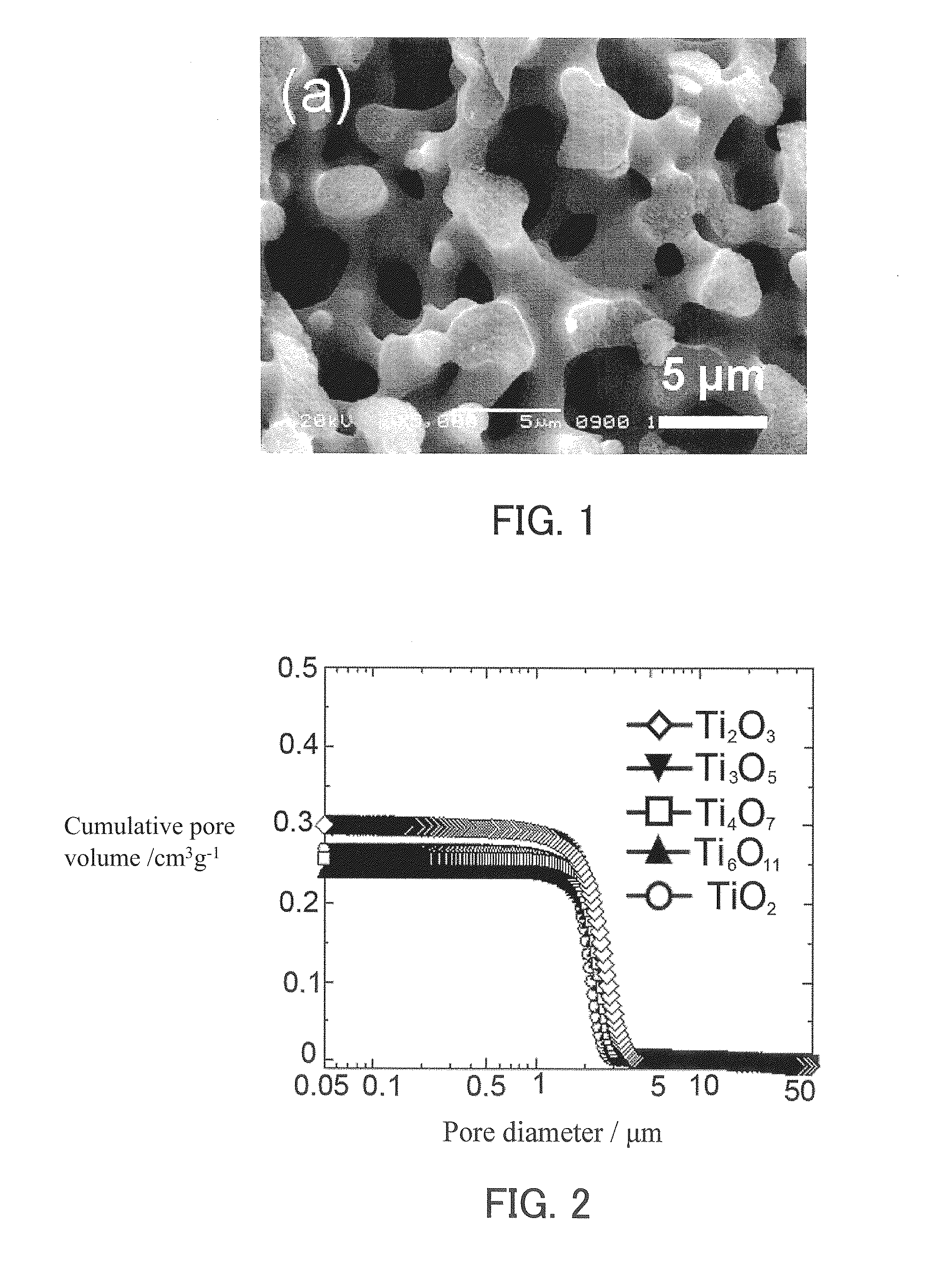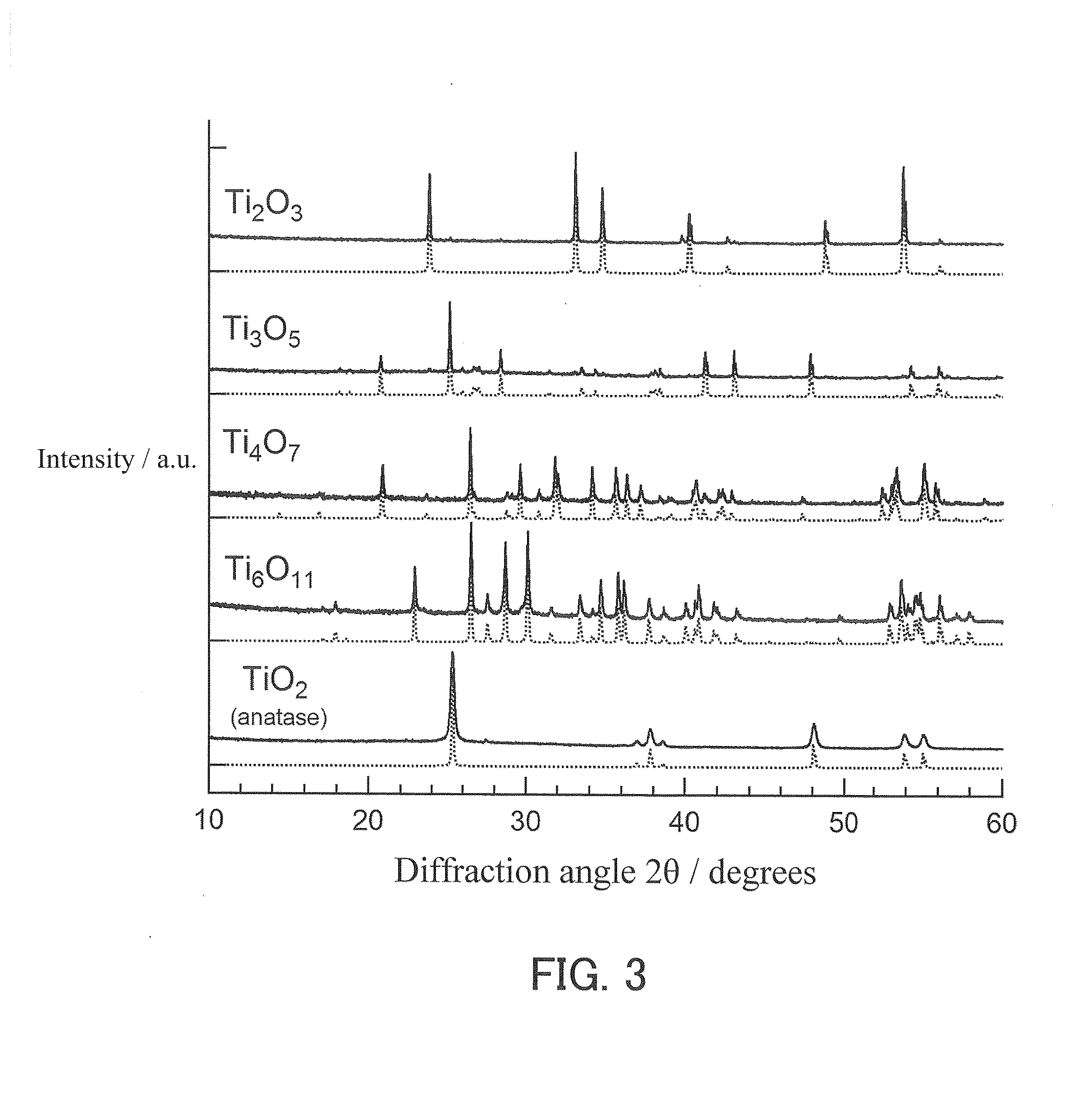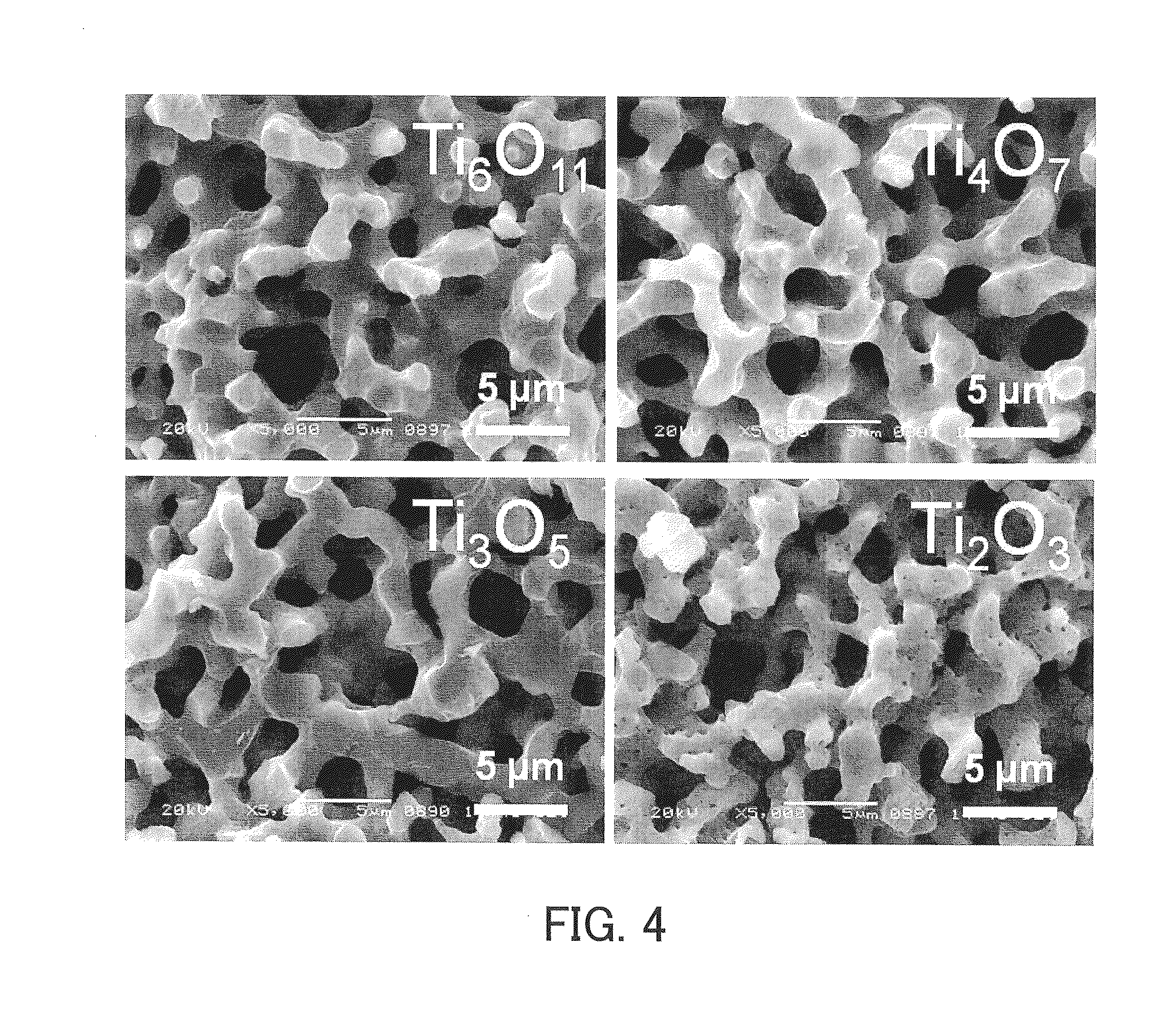Macroporous titanium compound monolith and method for producing same
a technology of titanium compound and monolith, which is applied in the field of titanium compound monolith, can solve the problems of not having controlled macropores, few disclosures relating to a method for producing porous monoliths composed of titanium compound, and not having a single crystalline phase of oxygen-deficient titanium oxid
- Summary
- Abstract
- Description
- Claims
- Application Information
AI Technical Summary
Benefits of technology
Problems solved by technology
Method used
Image
Examples
example 1
Fabrication of Oxygen-Deficient Monoliths
[0165]Oxygen-deficient monoliths were fabricated from the dioxide monolith A fabricated as described above. Specifically, the oxygen-deficient monoliths were fabricated by the procedures described below.
[0166]The dioxide monolith A and a zirconium foil (with an average thickness of 100 μm) were placed in a quartz tube, and the quartz tube was tightly closed. The amount of the zirconium foil placed in the quartz tube was adjusted to be 5 to 10 weight % greater than the stoichiometric amount necessary to reduce and convert the titanium dioxide composing the dioxide monolith framework into oxygen-deficient titanium oxide. Four samples differing in the amount of the zirconium foil were prepared for the purpose of forming frameworks composed of four types of oxygen-deficient titanium oxide (Ti2O3, Ti3O5, Ti4O7, and Ti6O11). Next, a vacuum with a pressure of 4×10−2 Pa was created within the quartz tube, which was sealed so that gases could not ente...
example 2
[0172]A dioxide monolith B was obtained according to the precursor monolith fabrication method described above, except that the sintering temperature for the dry gel was 800° C. This dioxide monolith B was subjected to SEM observation, pore distribution measurement by mercury intrusion, and evaluation of XRD peaks of the material composing the framework. The XRD peaks of the material composing the framework of the dioxide monolith B are shown in FIG. 7A. In FIG. 7A, the result indicated by “TiO2” is that for the dioxide monolith B. In FIG. 7A, the lower dashed line of the two dashed lines represents the theoretical diffraction peaks of rutile-type TiO2, while the solid lines represent the diffraction peaks actually measured for the dioxide monolith B and oxygen-deficient monoliths obtained by gas-phase reduction of the monolith B. These evaluation results confirmed that the dioxide monolith B was a macroporous monolith having a co-continuous structure of macropores and a framework c...
example 3
Fabrication of Oxynitride Monolith
[0177]An oxynitride monolith was fabricated from the dioxide monolith A fabricated as described above. Specifically, the oxynitride monolith was fabricated by the procedures described below.
[0178]The dioxide monolith A and a zirconium nitride powder (with an average particle diameter of 100 μm) were placed in a quartz tube, and the quartz tube was tightly closed. The amount of the zirconium nitride powder confined in the quartz tube was 50 parts by weight per 100 parts by weight of titanium dioxide. Next, a vacuum with a pressure of 4×10−2 Pa was created within the quartz tube, which was sealed so that gases could not enter or exit the quartz tube any more. Next, the entire tube was put into an electric furnace maintained at 1150° C., followed by heating treatment for 24 hours. After the heating treatment, the quartz tube was taken out from the electric furnace, was cooled to room temperature at a temperature decrease rate of 100° C. per hour, and w...
PUM
| Property | Measurement | Unit |
|---|---|---|
| electrical resistivity | aaaaa | aaaaa |
| temperature | aaaaa | aaaaa |
| temperature | aaaaa | aaaaa |
Abstract
Description
Claims
Application Information
 Login to View More
Login to View More - R&D
- Intellectual Property
- Life Sciences
- Materials
- Tech Scout
- Unparalleled Data Quality
- Higher Quality Content
- 60% Fewer Hallucinations
Browse by: Latest US Patents, China's latest patents, Technical Efficacy Thesaurus, Application Domain, Technology Topic, Popular Technical Reports.
© 2025 PatSnap. All rights reserved.Legal|Privacy policy|Modern Slavery Act Transparency Statement|Sitemap|About US| Contact US: help@patsnap.com



